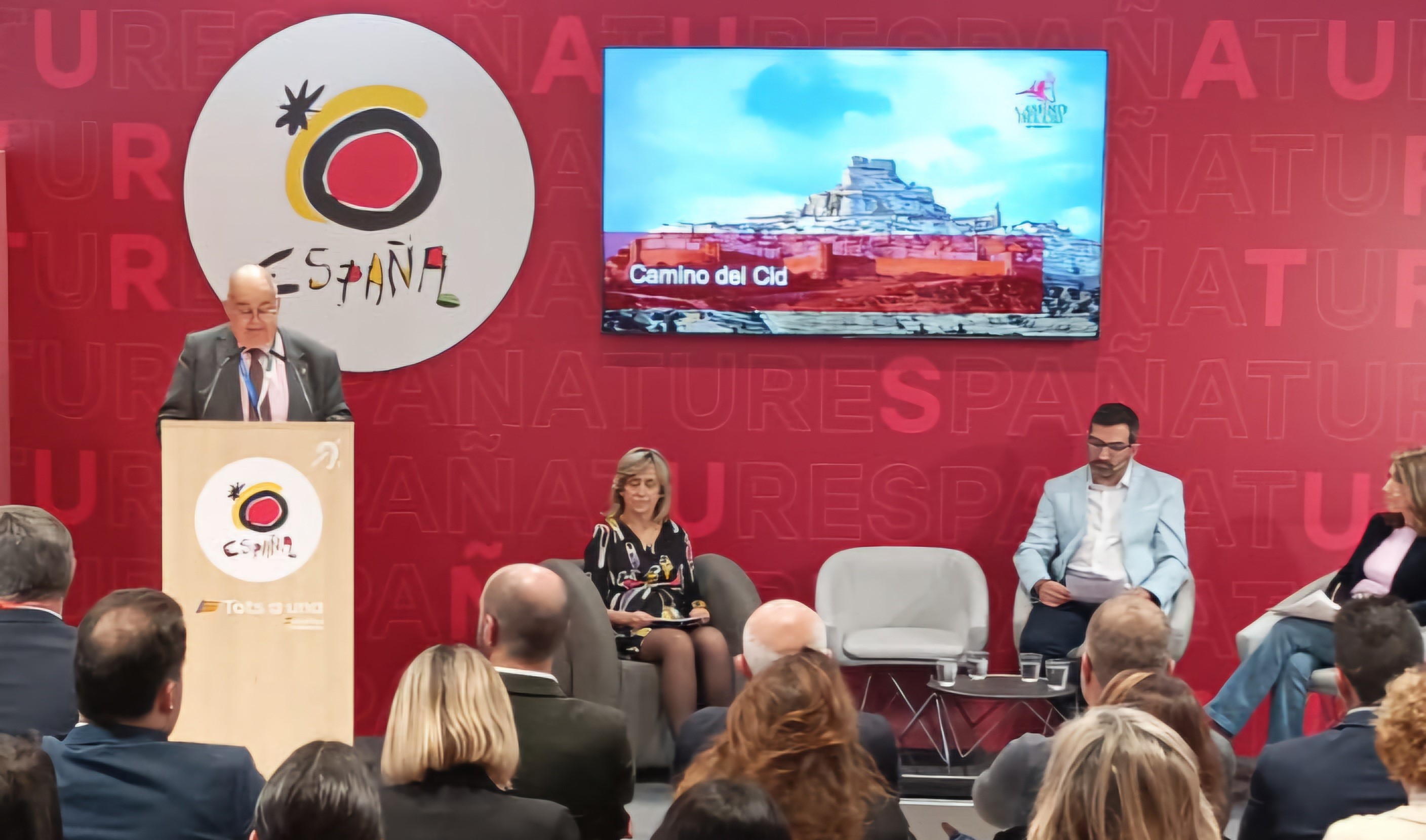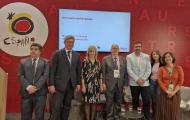Cultural Routes of Spain continues growing

The presentation of two new itineraries as members of the Cultural Routes of Spain Association took place on 23 January at the Turespaña stand at the Fitur Tourism Fair in Madrid (Spain).
Cultural Routes of Spain is an association but also is a tourist brand assisted by the Spanish Government's Secretary of State for Tourism, whose purpose is to promote these routes abroad. It currently includes eight Spanish thematic routes, which constitute a representative sample of the country's territorial and cultural diversity. These routes are managed by non-profit organisations, made up of public and private entities related to culture and tourism.
The event was opened by Ilona Shekyants, Deputy Director General for Tourism Development and Sustainability of the Ministry of Industry and Tourism, who reiterated the strong support of the Secretary of State for this project as it coincides with some of the objectives set by the Government, including the fight against depopulation through markedly experiential tourist destinations..
Juan Carlos Fernández, Mayor of Zafra (Badajoz) and President of the Cultural Routes of Spain, welcomed the new member routes and recalled the origins of this association, first as the result of occasional collaborations in international promotion and already in 2021 as a legally constituted association, with sufficient legal personality to relate to third entities and administrations, in order to promote abroad the cultural wealth of Spain through five thematic itineraries founders: Routes of Prehistoric Art, Via de la Plata route, Camino del Cid route, Routes of Charles V and Caminos de Pasion (Passion Roads) route.
The new routes: Canal de Castilla and Cluny Ibérica
Later, in 2024, the Bética Romana route was added and, just at the beginning in 2025, the Canal de Castilla, one of the most important hydraulic engineering works carried out in the 18th and 19th centuries, and the Iberian Cluny route, which sheds light on one of the most important European influences that Spain received in the Middle Ages and a key to understand the development of the Peninsula in the 11th century and later. Its representatives, María José de la Fuente, First Vice-President of the Provincial Council of Palencia, for Canal de Castilla, and Jesús Robles, on behalf of Sitios Cluniacenses, had the opportunity to present their routes to the public that crowded the Turespaña hall.
The President also recalled the main activities of Cultural Routes of Spain, as an association, which are concentrated in international promotional activities, among others: attendance at professional tourism fairs (Paris TOP RESA, ITB Berlin and WORLD TRAVEL MARKET in London); contacts with tour operators and international media, and cooperation in promotion through Turespaña with the Spanish Tourism offices abroad, dependent on the General Secretariat of State for Tourism.
The "Crossroads of Roads" project
He also defined the routes as "an innovative laboratory for creating projects and promoting destinations thanks to the synergies generated by the different routes, with the contribution of their extensive experience, in many cases for more than 20 years".
Key to all of this is the project currently being carried out by the association within the framework of the Tourism Spain Experiences Plan. Thus, Victoria Bravo, the project coordinator, presented "Cruce de Caminos" (Crossroads of Roads), an initiative that aims to enhance the value of some places that are crossroads of two or more cultural routes and that will serve as a gateway to the different itineraries through a rich and diverse experiential offer. The project is part of the Experiences Tourism Spain Plan, financed with Next Generation - EU funds.
Cultural Routes, a priority partner
Natalia Briales, Head of the Cultural Tourism and Content Marketing Area of the Subdirectorate General of Foreign Tourism Marketing, closed the event, stating that for Turespaña the Cultural Routes of Spain are a priority partner in Turespaña's strategy of deconcentration, deseasonalisation and the fight against depopulation, and stressed the importance of the increase in cultural spending, which is undoubtedly one of the most ambitious proposals for our inland tourism in the coming years.
Spain is one of the five countries in the world with the highest number of properties inscribed on the UNESCO World Heritage List. These properties are only the spearhead of the enormous heritage of our country, the result of an equally rich and diverse history, which is scattered throughout the territory, especially in inland areas, sometimes little known and plagued by depopulation.
Tourism based on thematic routes makes it possible to enter these territories, make their history known, generate economic resources and promote the development of new lines of work and opportunities for their inhabitants. The Cultural Routes of Spain are a representative sample of the territorial and cultural diversity of the country, and are an important contribution to the new model of tourism that, from entities such as the World Tourism Organisation, UNESCO or the Council of Europe, has been proposed in the last 15 years, with values such as sustainability, social ethics, socio-cultural and economic development of rural populations through participatory management, among others.
The event was also attended by Sergio Velasco and Fermín Encabo, Presidents of the Caminos de Pasión routes and Charles V Routes in Spain, respectively.







